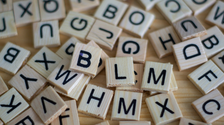Recently, many more people have become interested in learning Korean. It is becoming increasingly popular with those who enjoy learning languages for fun, as well as those who want to add a language to their resume. As a result, learning Korean has become very useful, and could help you in your future career. In addition, there are also many people who are learning Korean in order to communicate with Koreans and better understand Korean popular music (Kpop), Korean movies (Kmovies) and Korean dramas (Kdramas). Whatever your reason, learning Korean is very interesting and enjoyable.
With so many people learning Korean, it’s important to provide students with useful tips on how to speak the language better. Therefore, in this article, we will discuss some basic Korean particles that can be confusing to learners. Let’s have a look at them one by one.
Particle Group #1: 은/는 , 이/가 and 을/를
은/는 is used when you are speaking about a subject in general:
- 나는 학생이다. (I am a student).
- 사람들은 친절하다. (People are kind).
- 그녀는 영화를 보고 있어. (She is watching a movie).
On the other hand, 이/가 is used when you want to emphasize a subject. As a result, a lot of people get confused about when to use 이/가. Therefore, you should keep in mind that this particle is only used for emphasis and to help express the speaker’s intention better. Let’s look a some comparisons of these particles in action:
- 나는 교사다. (I am a teacher).
- 내가 교사다. (I am the teacher).
- 저것은 내 차다. (That is my car).
- 저것이 내 차다. (THAT is my car).
- 그는 배우야. (He is an actor).
- 그가 배우야. (He is the actor).
As for 을/를, you use it when you are speaking about an object.
- 나는 피자를 좋아한다. (I like pizza).
- 그는 음악을 듣는다. (He is listening to music).
- 나는 라면을 먹고 싶어. (I want to eat ramen).
We have already covered quite a few particles, so if you are confused, don’t worry. That’s normal. In fact, until you feel completely comfortable using these particles, you don’t really have to think too much about them at all. That’s because even Koreans sometimes get confused when we are using them, and we often just omit them. So, if you prefer, you can just omit them like Koreans do. This is especially true in spoken language.
- 나(는) 샌드위치(를) 먹어. = 나 샌드위치 먹어. (I am eating a sandwich).
- 나(는) 수영(을) 좋아해. = 나 수영 좋아해. (I like swimming).
- 한국사람들(은) 술(을) 많이 마셔. = 한국사람들 술 많이 마셔. (Koreans drink a lot of booze).
Particle Group #2: 에 and 로/으로
The particle 에 is used to speak about places.
- 잭은 집에 갔어. (Jack went home).
- 제인은 공항에 갈 거야. (Jane will go to the airport).
- 왓슨은 경찰서에 가고 있어. (Watson is going to the police station).
On the contrary, you use 로/으로 in order to speak about direction.
- 톰은 캐나다로 갔어. (Tom went to Canada).
- 이 비행기는 북쪽으로 간다. (This plane is going north).
- 요한은 성지로 갈 거야. (Yohan will go to the shrine).
에 and 로/으로 have very slight differences in meaning. However, Koreans usually just use them interchangeably. Therefore, if you get them confused or just have difficulty remembering them well, just omit them. The meaning will almost be the same, except for some very specific cases. However, those specific cases are very rare.
- 마이크는 교회(에) 갈 거야. = 마이클은 교회 갈 거야. (Mike will go to church).
- 나는 중국(으로) 가고 싶어. = 나는 중국 가고 싶어. (I want to go to China).
- 에디슨은 이스라엘(에) 갔어? 아니면 이집트(에) 갔어? = 에디슨은 이스라엘 갔어? 아니면 이집트 갔어? (Did Edison go to Israel? or Egypt?)
Particle Group #3: 로/으로
로/으로 is used to speak about tools and methods. However, you can omit 로/으로 in the following examples:
- 잭슨은 젓가락(으로) 케이크를 먹는다. (Jackson is eating a cake with chopsticks).
- 우리는 배(로) 섬에 갔어. (We went to an island by ship).
- 제이슨은 칼(로) 고기를 잘랐어. (Jason cut meat with a knife).
Particle #4: 의
의 is more or less equivalent to “of” in English in the following examples:
- 아버지의 이름으로 (In the name of the father)
- 자동차의 엔진 (The engine of the car)
- 기차의 무게 (The weight of the train)
However, you can omit 의 in almost every case, except in some very special circumstances.
- 사람들(의) 성격 = 사람들 성격 (The character of the people = The people’s character).
- 친구(의) 의견 = 친구 의견 (An opinion of a friend = A friend’s opinion).
- 협상(의) 원리 = 협상 원리 (Principle of negotiation = Negotiation principle).
Conclusion
We have looked at four confusing particles in Korean. It’s true that they can be a little bit difficult, but don’t forget that if you get confused or just don’t feel comfortable using them yet, you shouldn’t worry too much. You can just omit them if you want. The instances in which they can’t be omitted are few and far between, so you are probably safe to leave them out.
The funny thing is that most Korean textbooks don’t even mention that you can omit almost every particle in Korean. I’m not exactly sure why they don’t mention it, but at least if you read my articles, you will learn how to speak Korean with greater ease.
I hope that this article was both helpful and useful to those who are learning Korean. I’ll be writing similar articles regularly from now on, so if you want to improve your Korean, it might be a good idea to check them out. Thanks for reading and hope to see you next time!
Image Sources







